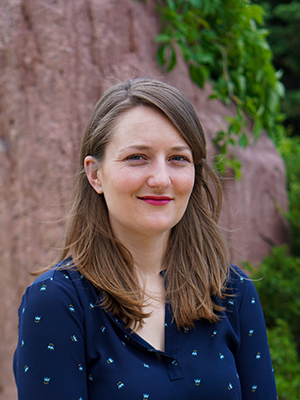research statement
My current research seeks to understand how climate-driven geochemical changes can be amplified or moderated by biologic feedbacks over time as life responds to changes in the environment. This work is motivated by understanding 1) what are some of the ways environmental systems progressively responded to change in the past over hundreds to thousands of years? And 2) how are these systems changing now? The MOSS Lab group works toward answering these questions using modern observations, stable isotope labelling, and paired reconstructions of climate and environmental parameters during past periods of warmth in the geologic record. Ongoing projects range from investigation of the Younger Dryas—Holocene Transition to redox conditions during the Early Cretaceous deposition of Wyoming’s Mowry Shale.
research facilities
The Organics in Sedimentary Systems Lab (Moss Lab) is optimized for lipid biomarker extractions and purification, in preparation for mass spectrometry and isotope ratio mass spectrometry. Major features include:
- Multiple benchtop fume hoods for solvent use
- Vacuum manifold for column chromatography
- MARS accelerated solvent extraction system
- 23L Ashing furnace
- N2 dry-down stations (including TurboVap)
- Freeze Dryer
The Facility for Mass Spectrometry is designed for high-resolution biomarker characterization, quantification, and/or purification. Major equipment available include:
- GC-Flame Ionizing Detector
- GC-Single Quadrupole Mass Spectrometer
- GC-Triple Quadrupole Mass Spectrometer
- HPLC-Mass Spectrometer with Thermostated Autosampler and UV-Vis and Fraction Collection Modules (housed in the Geochemical Analytical Laboratory)
teaching
Core courses offered annually:
- GEOL2000 Geochemical Cycles
Topicals offered on a rotating schedule:
- GEOL4200/5200 Introduction to R
- GEOL4200/5200 Biogeochemistry
- GEOL4200/5200 Climate of the Holocene
recent publications
McFarlin, J.M., Axford, Y., Kusch, S., Masterson, A.L., Lasher, G.E., Osburn, M.R. In Press. Aquatic plant wax hydrogen and carbon isotopes in Greenland lakes record shifts in methane cycling during past Holocene warming. Science Advances.
Caro, T.A., McFarlin, J.M., Jech, S., Fierer, N., Kopf, S. 2023. Hydrogen stable isotope probing of lipids demonstrates slow rates of microbial growth in soil. Proceedings of the National Academy of Sciences 120(16): e2211625120. 10.1073/pnas.2211625120
Halamka, T.A., Raberg, J.H., McFarlin, J.M., Younkin, A.D., Mulligan, C., Liu, X.L., Kopf, S.H. Production of diverse brGDGTs by Acidobacterium Solibacter usitatus in response to temperature, pH, and O2 provides a culturing perspective on brGDGT proxies. Geobiology 21(1): 102-118. 10.1111/gbi.12525
Leavitt, W.D., Kopf, S.K., Weber, Y., Chiu, B., McFarlin, J.M., Elling, F.J., Hoeft-McCann, S., Pearson, A. 2023. Controls on the hydrogen isotope composition of tetraether lipids in an autotrophic ammonia-oxidizing marine archaeon. Geochimica et Cosmochimica Acta 352: 194-210. 10.1016/j.gca.2023.04.033
Miller, G.H., Wolfe, A.P., Axford, Y., Briner, J.P., Bueltmann, H., Crump, S., Francis, D., Fréchette, B., Gorbey, D., Kelly, M., McFarlin, J., Osterberg, E., Raberg, J., Raynolds, M., Sepúlveda, J., Thomas, E., de Wet, G. 2022. Last interglacial lake sediments preserved beneath Laurentide and Greenland Ice sheets provide insights into Arctic climate amplification and constrain 130 ka of ice-sheet history. Journal of Quaternary Science 37(5): 979-1005. 10.1002/jqs.3433
Halamka, T.A., McFarlin, J.M., Younkin, A.D., Depoy, J., Dildar, N., Kopf, S.H. 2021. Oxygen limitation can trigger the production of branched GDGTs in culture. Geochemical Perspectives Letters 19: 36-39. 10.7185/geochemlet.2132
Dion-Kirschner, H., McFarlin, J.M., Masterson, A.L., Axford, Y., Osburn, M.R. 2020. Constraints on the sources and climate signals recorded by sedimentary plant waxes in west Greenland. Geochimica et Cosmochimica Acta 286: 336-354. 10.1016/j.gca.2020.07.027
Puleo, P.J.K., Axford, Y., McFarlin, J.M., Curry, B.B., Barklage, M., Osburn, M.R. 2020. Late glacial and Holocene paleoenvironments in the midcontinent United States, inferred from Geneva Lake leaf wax, ostracode valve, and bulk sediment chemistry. Quaternary Science Reviews 241: 106384. 10.1016/j.quascirev.2020.106384
McFarlin, J.M., Axford, Y., Masterson, A.L., Osburn, M.R. 2019. Calibration of modern sedimentary d2H plant wax-water relationships in Greenland Lakes. Quaternary Science Reviews 225: 105978. 10.1016/j.quascirev.2019.105978
McFarlin, J.M., Axford, Y., Osburn, M.R., Kelly, M.A., Osterberg, E.C., Farnsworth, L.B. 2018. Pronounced summer warming in northwest Greenland during the Holocene and Last Interglacial. Proceedings of the National Academy of Sciences 115(25): 6357-6362. 10.1073/pnas.1720420115


